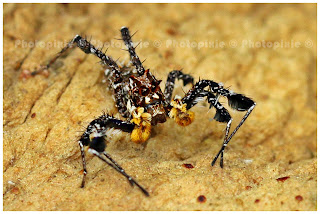A few weeks ago I accompanied my hubby and three of his colleagues on a trip to Oudtshoorn, one of the largest towns in the Klein Karoo region of the Western Cape. The town was named after Baron Pieter van Rheede van Oudtshoorn, who was appointed Governor of the Cape Colony in 1772. Sadly, he died at sea on 23 January 1773 on route to Cape Town from Amsterdam, where he served as a member of the 'Verenigde Oos-Indiese Kompanjie'.
Travelling via the scenic route of the R62, I was stunned by the beauty of the clouds hanging low over the surrounding mountain range. It took us approximately 3 hours to travel from Port Elizabeth, where we live, to Oudtshoorn.
Upon our arrival I immediately took to the streets camera in hand. Although moderate in size, Oudtshoorn is a very 'church rich' town. My first stop was the Dutch Reformed Church. During 1857 the farm Hartebeesrivier was donated to the parish to build a new church. Due to a lack of funds, construction was abandoned in 1863. However, 13 years later construction resumed - all thanks to a boom in the ostrich industry. The church, built from sandstone which was quarried locally, was finally completed in 1879.

The beautiful Presbyterian Church situated a few blocks from the Dutch Reformed Church was built in 1923.
Most people hate to pay a visit to a cemetery irrespective if its in broad daylight or at night. I, on the other hand, love to visit the final resting place of many a soul. It's the one place where I can sit for hours and just be at peace. Of course I would love to bump into a spirit or two, but for some reason they prefer to hide from me :(

The first two photos was taken at the main cemetery situated on a hill in Condor Street. There are a number of gates leading into the cemetery - each one indicates the name of a church denomination. The last photograph was taken at an old cemetery located in the midst of town.

On our second day we woke up to find the Swartberg and Outeniqua mountains covered in snow! What a beautiful sight it was!!!!!
Oudthoorn is home to the world's largest ostrich population with some of the best feathers, ostrich meat and leather products being produced in this region. A visit to one of the ostrich breeding farms is a must. There tourists get the opportunity to stand on ostrich eggs and even a chance to ride the largest bird in the world.


My visit to Safari Show Farm coincided with mating session - so I was lucky enough to witness the mating dance first hand.
There is also an opportunity to visit the Ostrich Palace "Welgeluk" (Afrikaans for 'Good Fortune', which was built at the height of the feather boom in 1920. The homestead is now a National Monument and the private residence of the Lipschitz family.
The tour ended with an "Ostrich Derby" with two jockeys displaying their riding skills.
I can't wait for my next visit to this wonderful town - a visit to the Cango Caves will be my number one priority when I return.
Flora of the Klein-Karoo:



























































